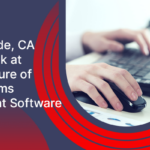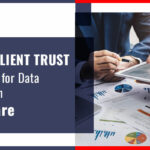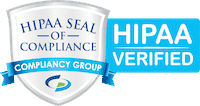Riverside, CA: A Look at the Future of Claims Management Software in 2024
July 25, 2024
Independent healthcare administrations manage a lot of information about patient visits, doctor productivity, claims submission, insurance payments, and more. An advanced healthcare claims reporting software for third-party administrators and payers who want to improve claims.
Maintaining competitiveness in the new age fast-paced world is dependent upon efficiency, particularly in sectors such as insurance where the processing of claims assumes a pivotal function. To optimize processes and augment efficiency, an increasing number of insurance firms are implementing sophisticated reporting software. These robust tools provide capabilities for customization, automation, and insights, which can substantially expedite the claims workflow.
Understanding Advanced Reporting Software
The purpose of sophisticated claims reporting software is to collect, analyze, and present data in a coherent fashion. In addition to fundamental reporting functionalities, it provides sophisticated integration capabilities, visualization tools, and analytics. Through the utilization of data, insurance companies can enhance operational efficiency, identify trends, and make well-informed decisions.
Key Features and Benefits
- Data integration: Sophisticated claims reporting software possesses the capability to effortlessly assimilate data from a multitude of sources, encompassing internal databases, external APIs, and third-party applications. This functionality empowers insurers to centralize all pertinent data, thereby obviating the necessity for labor-intensive data input and mitigating the likelihood of inaccuracies.
- Customizable Dashboards: These tools enable users to generate dashboards that are customizable and tailored to their particular requirements. Dashboards can be customized to present users with the most pertinent information, such as trends, tracking the status of claims, or monitoring key performance indicators (KPIs).
- Predictive analytics: Advanced claims reporting software can forecast claim volumes, detect potential fraudulent activities, and anticipate emergent trends through the utilization of predictive analytics algorithms. By adopting this proactive stance, insurers can reduce potential hazards, optimize resource allocation, and enhance their overall decision-making process.
- Workflow Automation: Workflow automation is a viable alternative to time-consuming and error-prone manual procedures. Data entry, report generation, and document processing are examples of repetitive duties that can be automated using sophisticated reporting software. This practice not only results in time savings but also diminishes the probability of human error, thereby enhancing precision and effectiveness.
- Real-Time Insights: Acquiring actionable insights promptly is of the utmost importance within the insurance sector. By providing insurers with real-time data analytics via advanced reporting software, the latter enables them to promptly address evolving market conditions, consumer demands, and regulatory obligations.
Use Cases in Claims Processing
Advanced claims reporting software can revolutionize the way insurance companies handle claims processing. Here are some key use cases:
- Fraud Detection: By analyzing historical claims data and identifying patterns indicative of fraud, advanced reporting software can help insurers detect suspicious activities early on. This allows them to investigate further and take appropriate action to prevent fraudulent claims.
- Claims Triage: Prioritizing claims based on severity and complexity is essential for efficient claims management. Advanced reporting software can automatically triage incoming claims, routing them to the appropriate team or adjuster based on predefined criteria.
- Claims Reserving: Accurately estimating claim reserves is crucial for financial planning and risk management. Advanced reporting software can analyze historical claims data, assess claim severity and frequency, and calculate appropriate reserves in real-time.
- Customer Insights: Understanding customer behavior and preferences is key to providing personalized service and improving customer satisfaction. Advanced reporting software can analyze customer interactions, feedback, and demographic data to gain valuable insights into customer needs and preferences.
- Regulatory Compliance: Compliance with regulatory requirements is a top priority for insurance companies. Advanced reporting software can help ensure compliance by generating accurate reports, tracking key metrics, and flagging any potential issues or discrepancies.
Implementation Considerations
While the benefits of advanced reporting software are clear, successful implementation requires careful planning and consideration. Here are some key factors to keep in mind:
- Data Quality: The accuracy and reliability of data are critical for meaningful insights. Insurers must ensure that data sources are clean, consistent, and up to date before implementing Claims reporting software.
- User Training: Training and support are essential for user adoption and success. Insurers should provide comprehensive training programs to help users familiarize themselves with the software’s features and capabilities.
- Integration with Existing Systems: Advanced reporting software should seamlessly integrate with existing systems and workflows to minimize disruption. Insurers should carefully evaluate compatibility and integration requirements before selecting a solution.
- Scalability: As the business grows and evolves, so too should the reporting software. Insurers should choose a solution that is scalable and flexible enough to accommodate future needs and requirements.
- Security and Compliance: Protecting sensitive data and ensuring compliance with industry regulations are paramount. Insurers should prioritize security features such as encryption, access controls, and audit trails when selecting a claims reporting software solution.
Conclusion
Advanced reporting software holds the key to accelerating claims workflow and driving operational efficiency in the insurance industry. By leveraging data analytics, automation, and customization capabilities, insurers can streamline claims processing, improve decision-making, and enhance customer satisfaction. However, successful implementation requires careful planning, attention to data quality, and a focus on user training and support. With the right approach, Datagenix’s advanced claims reporting software can revolutionize the way insurance companies operate in today’s competitive landscape.
7 Features Every Online Claim Management System Needs
June 27, 2024What to Look for in Claims Management Software?
May 8, 2024









